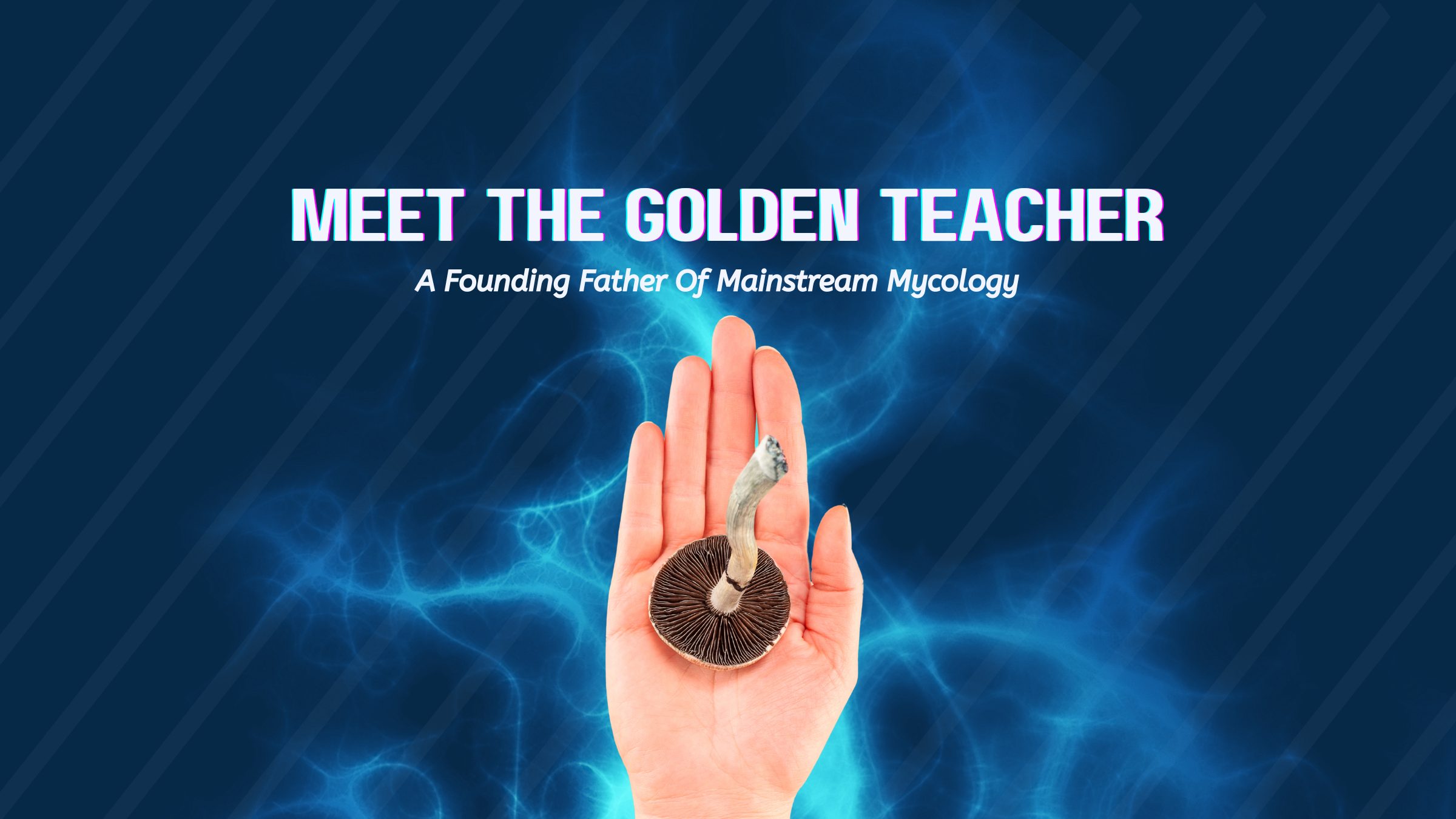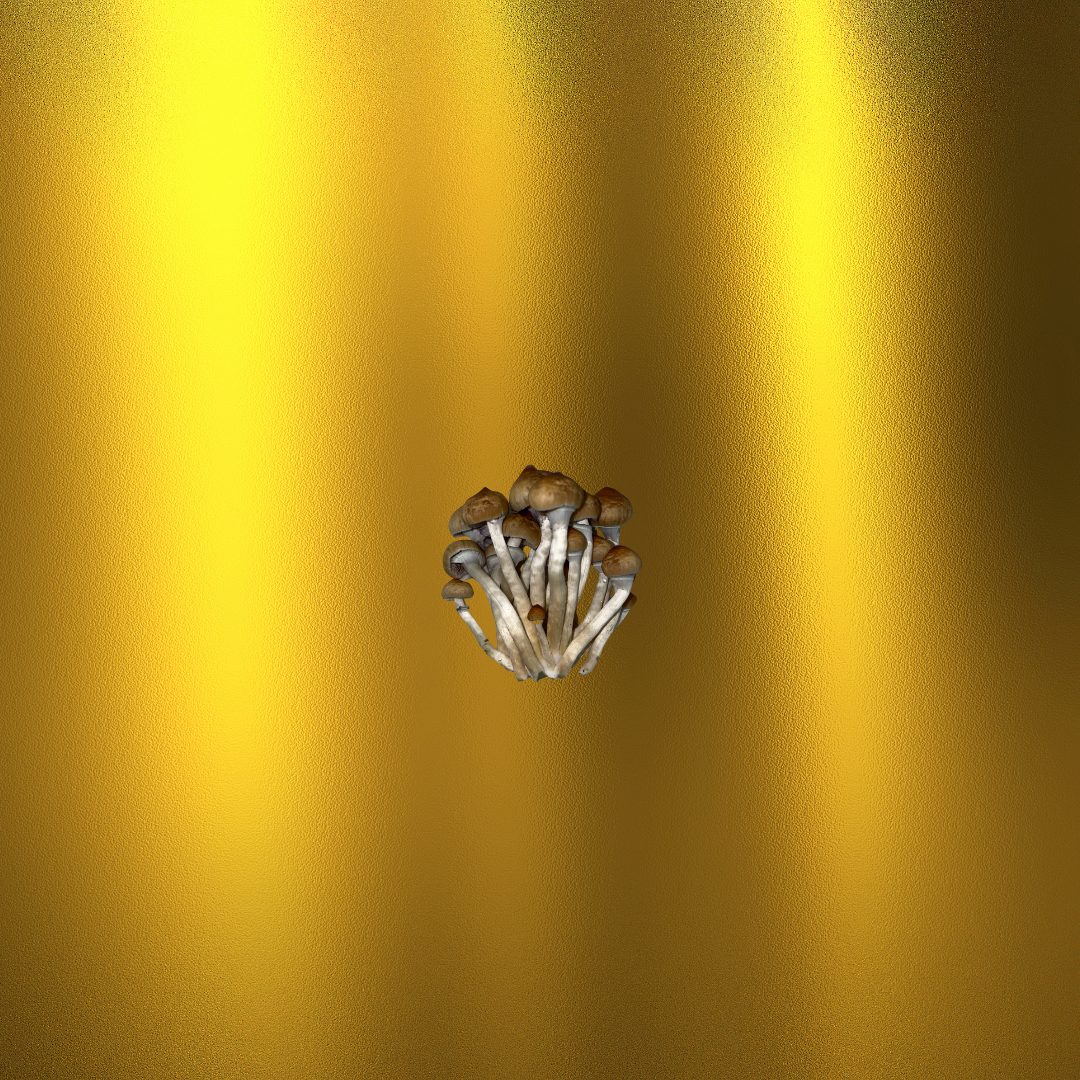The Golden Teacher Mushroom Strain | What To Know
Interest in fungi is reaching an all-time high, and the popular Golden Teacher Strain is the perfect embodiment of it. This guide will give you a clear understanding of Golden Teacher’s characteristics, so that you can feel comfortable working with it moving forward.
Disclaimer: Golden Teacher mushrooms, and all strains of psilocybe cubensis are federally illegal to have in your possession. This content is for educational purposes only, and is meant to provide added context regarding our microscopy spores syringe products. Our spores are for microscopy only, and none of the information provided is intended to imply that our spores are for anything else.

What Is The Golden Teacher (GT) Mushroom?
The Golden Teacher mushroom is a strain from the magic mushroom species known as Psilocybe cubensis. Golden teacher is a popular choice in both today’s mushroom market and mushroom spore markets, thanks to its extraordinary golden color, ease of use, and high chemical concentration. Golden Teachers are very frequently used or discussed in the mushroom community, and thus learning about them on an intimate level is critical for anyone looking to advance in mycology. Golden Teacher spores are widely available as well, fortifying the importance of getting familiar with the strain.
Where did Golden Teacher Come From?
The Golden Teacher is a strain of the magic mushroom species “psilocybe cubensis”, and has become one of the most sought after options on the market. Why? Well, golden teacher was born out of a need for a simple, aesthetic strain that folks can research with ease. To this day, it is revered for its approachability and beginner-friendly properties. It is rumored that the original specimen of GT was discovered on a farm in Georgia (USA), absorbing the golden sun above, but no one knows for certain. We do know, however, that their popularity in the myco-community started to emerge around the mid 1980’s. Now, it is the most abundant strain of psilocybe cubensis available on the market! This humble mushroom may have a history lost in time, but its success story makes up for it and then some!
Why is Golden Teacher So Popular?
Why are they so popular? As mentioned, GT is loved dearly for its super predictable behaviors, and consistent characteristics. It is, without a doubt, the most approachable strain that you’ll be able to find. Our team at Eden Shrooms claims responsibility for the mainstream popularity of this mushroom, thanks to innovating genetics towards relative perfection, bringing it to market in 2008, and by developing a cousin to the Golden Teacher known as the “Blue Teacher”, which you can learn about here.
Golden teacher [Actives]
byu/TZGmyc inMushroomGrowers
Physical Characteristics Golden Teacher Mushrooms
In the USA & its territories, you’ll only be able to work with the spores of Golden Teacher mushrooms, so we’ll discuss those features first. Then, for educational purposes, we’ll describe what the mushroom itself would look like if it hypothetically could fruit in the wild.
What Do The Spores Of Golden Teacher Look Like?
The spores of the GT mushroom are sub-ellipsoid on 4-spored basidia (a club-shaped cell that releases spores). For a visual example, think of what a red-blood cell looks like floating around your bloodstream. The general oval, cell-like shape is not too dissimilar. The spores, though different genetically than its cousin the ‘Blue Teacher’, have a very similar black-to-brown hue that is easy to notice on a contrasting background. Oh yeah, and the GT is a pretty heavy spore producer, leaving noticeable dark deposits and beautiful prints! Finally, while you may be able to see masses of spores with the naked eye, each spore is too small to see on its own. As you put these spores under your microscope, you’ll get a much better idea for what they look like.
What does the Golden Teacher Mushroom look like?
Let us reiterate that Golden Teacher mushrooms are illegal to have in the USA, and so you won’t have luck viewing them within our borders. However, for the sake of education, we can attempt to describe what they’d look like if they did grow in the wild, or in a legal jurisdiction elsewhere in the world. Golden Teachers can be visualized as more brown/golden version of the blue teacher, with a tendency to bruise deep blues when touched. It would be quite the spectacle to see those deep blues with a pale-brown cap, and a heavy-black spore deposit to contrast. Look closer at the chemical anatomy of the Golden Teacher, and you’ll a very high alkaloid content, but not as much as something like Tidal Wave. Overall, and in our mycological opinion, Golden Teacher is one of the most visually brilliant strains that there is.
How Big Are Golden Teacher Mushrooms?
What about size? Well, GTs aren’t the biggest, they aren’t the smallest, but rather an optimal size for rapidly & effectively dealing with environmental conditions. GT’s are tough, vibrant, and chemically dense, but aren’t really the largest mushrooms you’ll ever see.
Legal Status of Golden Teachers
As legislation evolves, this information is subject to change. However, this is the general legal situation from a bird’s eye view:
Buying Golden Teacher Mushrooms = Illegal
Possessing Golden Teacher Mushrooms = Illegal
Growing Golden Teacher Mushrooms = Illegal
Buying Golden Teacher Spores = Legal in 48 states! (sorry Georgia and Idaho)
Consuming Golden Teacher Mushrooms = Illegal (Warning: Golden Teachers are very potent and consumption is NOT advised)
Are Golden Teachers Easy To Work With?
The Golden Teacher strain is quite a simple strain to work with, making it a great starting point for beginners with an interest in microscopy. In fact, we think Golden Teachers are the easiest way to grow your magic mushroom hobby with confidence. Why? Well, studying the strain under a microscope can be done very quickly and obtaining quality results can be achieved a lot more easily than, say, the Albino Penis Envy strain. You can grow your mycology hobby pretty easily with these.
Can you grow Golden Teacher Mushrooms?
Ahh, the question we’ve all been waiting for. Can you buy spores and grow your own GT magic mushrooms? In theory, these spores are capable of producing new mushrooms with real and active psilocybin within it. However, we must warn you that propagating these spores into psilocybe mushrooms is highly illegal and can get you in some serious trouble. Do not attempt to use our magic mushroom spores for anything besides microscopy.
Is Growing Golden Teacher Easy? (Hypothetically speaking)
Again, you are not allowed to grow magic mushrooms in the USA. However, understanding their genetic expressions is pivotal to performing proper microscopy research. With that said, Golden Teacher mushrooms are actually quite easy to grow in theory. Many of the cultivation principles follow that of other culinary mushrooms like Oyster mushrooms, but how? For edible mushrooms, a spore syringe is injected onto a sterile substrate, until all of the substrate is colonized. Then, the substrate is brought into “fruiting conditions” which typically consists of more air-flow and humidity, as well as a slightly lower temp. GT is beloved for its ability to handle a multitude of environmental conditions, making it more approachable for a novice. Unfortunately, however, this is all just for the sake of education as cultivation is illegal and not advised.
Understanding the basic behavior of the GT strain is very important to understanding various elements of the spore. For this same reason, we’ve made a contextual guide on how & when to harvest golden teacher mushrooms.
Where Can I Buy Golden Teacher Spores?
Golden Teacher spores are sold primarily on EdenShrooms.com. Should you see them listed anywhere else, be careful, as many vendors provide fake or unverified genetics. Additionally, you may have luck finding Golden Teacher spores in any of our 100+ retail locations near you! Since the GT mushroom does not have a native range, shopping spore syringes is the only way to acquire any genetic material pertaining to this strain. Maybe one day it will have found a native range, but not yet!
Curious about other unique strains? Check out this guide on African Transkei, or view our entire diverse collection.

